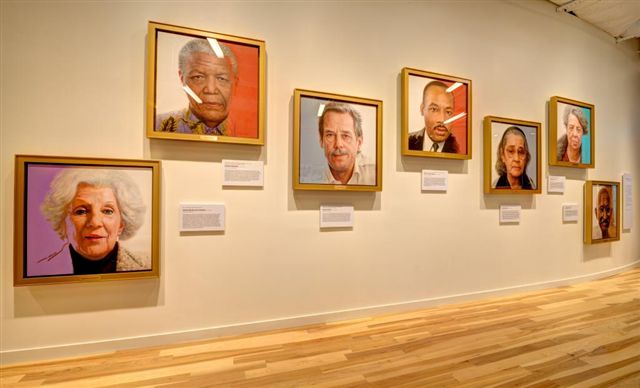BY MAHADEV DESAI
Atlanta, GA: With the addition of The Center for Civil and Human Rights which bridges American history of Civil Rights Movement of the 1950s and 1960s with the ongoing worldwide movement for Human Rights,Atlanta can now pride itself of yet another sparkling gem in its crown.
The Center for Civil and Human Rights opened to the public on June 23, 2014. The 42,000 sq. feet, three level center is on land donated by the Coca-Cola Company , downtown Atlanta, within walking distance of Atlanta’s two highly popular tourist spots- the Georgia Aquarium and World of Coca-Cola.
This impressive cultural institution tells the inspiring stories of individuals who either played or are still playing a role in the cause of civil and human rights. By depicting their stories and struggles through words, photos, maps, quotes, videos, wall-sized murals and interactive exhibits The Center affords the visitor a rare immersive experience.
“The Center uniquely and boldly connects historic freedom movements and iconic individuals, as well as everyday people, with the human rights issues of the present, thus sparking ongoing dialogue around the possibilities of the future. When we connect to others and to their circumstances, that emotional connection often compels us to lend our support, to take action even though we may never know or meet those who are affected, as evidenced by the courageous stories of many individuals featured in the exhibits. The Center draws on that innate characteristic of our humanity to inspire and empower visitors to help create a better world for us all.” said Doug Shipman, CEO of the Center.
“Voice to the Voiceless: The Morehouse College Martin Luther King, Jr. Collection” presents a rare collection of Dr. Martin Luther King, Jr.’s personal papers and items. The exhibition gallery—an intimate, peaceful room—sets the mood by projecting the expression “I have a dream” in glimmering light upon a black granite wall in 25 languages, thus highlighting what has become a worldwide call to action for civil rights. The visitor gets fully absorbed and engaged in the thoughts, emotions and memories of Civil Rights Movement’s iconic Dr. Martin Luther King, Jr.The exhibit also has mug shots of Freedom Riders on exterior of a bus.
Music lovers can relish popular songs including anthem of the civil rights movement, “We shall Overcome”.
The Center has a replica of a lunch counter. When the visitor sits at the counter, places his hands on the counter and dons a headphone, he can hear the insults, taunts and threats hurled by segregationists at the protestors during the civil rights movement. Visitor can also learn of the heart-wrenching event when on September 15, 1963 a bomb blast in Birmingham,Alabama church killed four African-American girls, and also watch the exhibit of Dr.Martin Luther King Jr.’s silent, somber funeral procession in Atlanta.
“Spark of Conviction: ‘The Global Human Rights Movement” is brought to life in the expansive, light-filled Human Rights Gallery, which illuminates both individuals and global human rights issues. The exhibition, which features interactive displays and videos, is designed to allow visitors to experience a personal connection to individuals who are taking a stand in the contemporary fight for human rights.’ This gallery features portraits of famed human rights icons and activists like Nelson Mandela; Dr.Martin Luther King, Jr.;Vaclav Havel; Eleanor Roosevelt; Mahatma Gandhi; etc.and human rights offenders like Adolf Hitler, Joseph Stalin;Idi Amin,Pol Pot,etc. Human Rights Watch have highlighted activists fighting for immigrant rights and disability rights in the U.S.; women’s rights in Iran; lesbian, gay, bisexual and transgender rights in Russia; and HIV/AIDS issues in China. The gallery also informs the viewers about the exploitation of children by forcing them to work in production of soccer balls,or toiling on cocoa farms,etc.
The writer has visited The Center for Civil and Human Rights and unhesitatingly recommends everyone-old or young to visit it. It provides a great learning experience of the history surrounding the Civil Rights Movement and raises awareness of many human rights problems worldwide that still need to be addressed. Whoever visits The Center will leave inspired and spurred “to reflect on how he or she can create a more just and humane future for all”.
The Center For Civil and Human Rights is on the web at www.civilandhumanrights.org. The center is open daily:10 a.m.-5 p.m., seven days a week.
Adults, $15; students and seniors, $13; children 3-12, $10.
The Center will also provide unique venue spaces that can host a variety of events, from business meetings and conferences to cocktail parties and receptions. The Center has both indoor and outdoor spaces that can accommodate small and large events.








